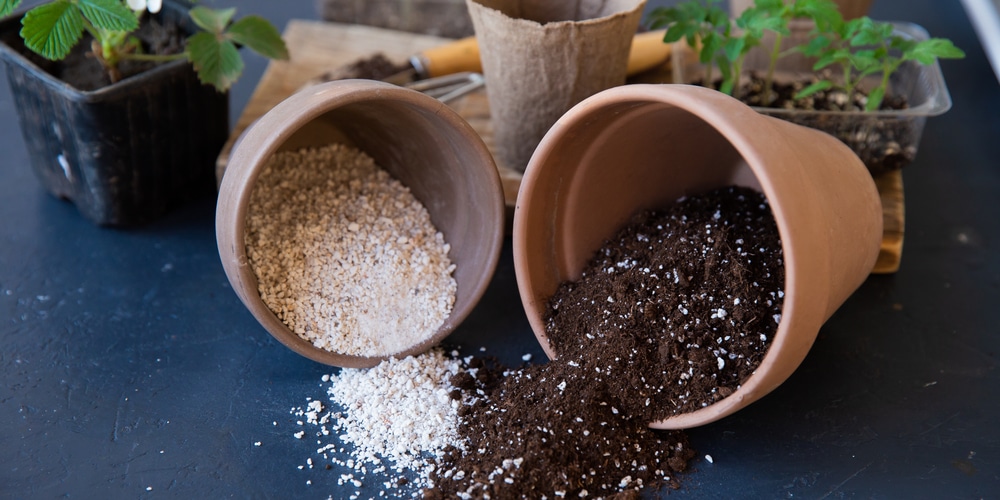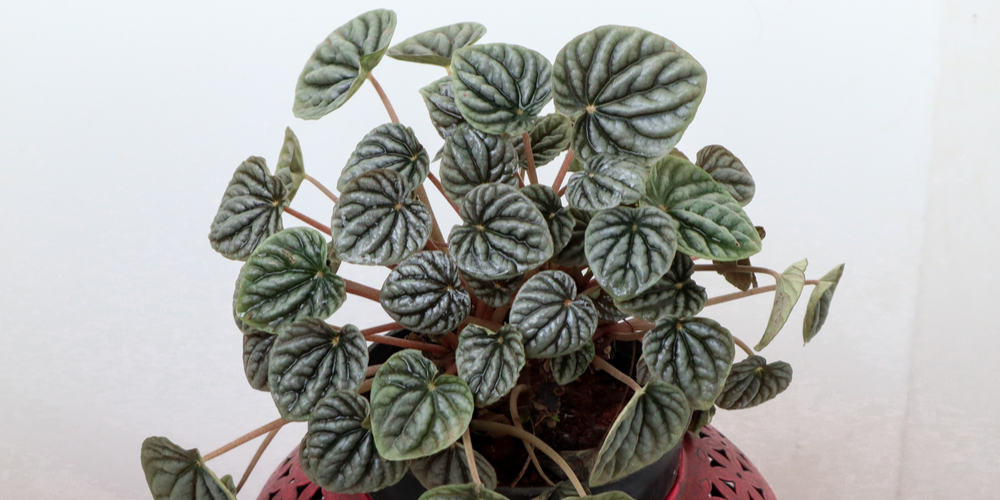| Botanical Name | Peperomia Ruby Cascade |
| Common Name | Ruby peperomia, Ruby Cascade |
| Plant Type | Perennial |
| Flower Color | Small, funnel-shaped scarlet blooms |
| Size When Mature | 3 to 5 inches |
| Bloom Time | Spring |
| Sun Requirements | Partial shade |
| USDA Hardiness Zones | 9 to 11 |
| Soil PH Range | 5.0 to 7.0 |
| Soil Type | Rich and well-draining |
| Water Needs | Low |
| Native Area | Central and South America |
What you Need to Know About Peperomia Ruby Cascade
Peperomia Ruby Cascade is unlike regular peperomia in that it acts more like a vining plant. It’s slow growing and has several care requirements that make growing a bit of a challenge.
Pet owners will love the fact that the plant is non-toxic to cats or dogs. It typically blooms come spring time and produces round pink-red flowers, but the two-toned leaves are the real stars of the show. The top leaf sports a dark green color while the underside is a rich ruby hue.
How to Care for Peperomia Ruby Cascade
Here’s everything you need to know about growing and caring for a thriving Peperomia Ruby Cascade
Light
Peperomia Ruby Cascade can be found in warm, tropical environments in dappled shade. It’s too sensitive to direct sunlight and high heat, thus the best position for the plant is in bright and indirect light.
The green leaves will be bleached when exposed to direct sun, and will go out of its way and reach towards the nearest light source if there isn’t enough. When thinking about putting it on a windowsill, consider a south-facing opening and several inches away.
The same light requirements should apply whether you’re planning on putting your Ruby Cascade indoors or outdoors. Also, you should be mindful that it’s not in the way of extreme heat and cold drafts or else it will get stressed and become weak.
Water and Soil Needs

Go with a 50-50 mix of perlite and peat moss, and add coarse sand to improve drainage. The idea here is to allow water to pass through quickly to avoid rot while giving the roots time to absorb water.
Peperomia Ruby prefers to stay dry most of the time and act like a semi-succulent in this regard. You should be very careful when thinking about watering this peperomia variety- let the soil dry out a few days before you reach for the hose.
The best way to check for soil moisture is to use a stick or your finger. You can also follow a watering schedule of once every 7 to 10 days during warmer months and once a month in winter.
Temperature Requirements
Peperomia Ruby loves warmth and a tropical setting. Put them in places with temperatures ranging from 65 to 80 degrees F and they’ll be very happy. Anything too high or too low will cause the leaves to droop and wrinkle. Furthermore, these plants can’t tolerate frost and cold drafts so keep them away from AC vents.
Ruby Cascade can grow outside in US zones 9 to 11 without needing additional protection. However, if temperatures drop to below 50 then it’s recommended that you overwinter or bring it indoors.
Fertilizer
The best fertilizer to use on a Peperomia Ruby Cascade is an organically-rich soil. You can amend with compost if outside and supplement with liquid fertilizer during its growing season.
Peperomia Ruby Cascade grows slowly, which means fertilizing won’t speed up its process. Dilute the liquid fertilizer and apply every two to three weeks in its peak time, which is spring and summer. It’s best not to fertilize during winter or fall as it’s in a dormant state.
It’s worth noting that too much fertilizing can cause stress to your plant. If the leaves start turning yellow you might be dealing with excessive chemicals in the soil. To solve this you can do a soil flush- pour in clean water for about 5 to 10 minutes straight to clear the fertilizer salts and excess nutrients.
Common Diseases
Peperomia Rubies may be attacked by common pests such as aphids, spider mites and mealybugs. Spider mites are small and black bugs that leave around ‘webs’ and steal sap from the plant, while aphids usually appear when your plant is stressed out.
To combat these issues you can use a simple homemade solution that consists of several drops of dish soap, a bit of isopropyl alcohol and filtered water. Put it in a spray bottle and apply to your affected peperomias.
Beginners often face root rot when caring for a Peperomia Ruby Cascade, simply because they tend to overwater or put their plants in compact and dense soil. Correct watering and putting your peperomia in well-draining soil should reduce this issue. Follow soil requirements and your plant should thrive indefinitely.
Peperomia Ruby Cascade Propagation
Propagating your Peperomia Ruby Cascade can be done by division or stem tip cutting.
Division is usually done when you’re in the process of repotting and your peperomia is out of its container. Here, you should pull the root ball and soil apart and ‘divide’ it into two sections. Treat each section as a separate plant and put them in the correct soil medium.
In stem tip cutting, you choose healthy growing stems and remove them from the mother plant just below a leaf node. Remove the lower leaves and put the cutting in a glass of clean water. Within 3 to 5 weeks the stems will have roots growing out the nodes or at the bottom.
You can also put the cuttings in an adequate soil media and apply root hormone at the tips just before planting them. Cover it with plastic and place them in a warm and humid environment to get a higher chance of success.
Once the roots are about an inch or two thick, prepare the container and use the same peat moss and perlite combination, with a generous sprinkling of sand to promote air circulation.
How to Prune Peperomia Ruby Cascade
Pruning Ruby Cascade Peperomia isn’t usually recommended unless you’re bothered by the long trailing vines.
If you plan on pruning then it’s best to plan ahead and do it before the fall season ends and just before your peperomia goes in a dormant state. You can cut into the stems an inch or so to keep it tidy, but you shouldn’t prune too much or else your plant gets permanently damaged.
Prune lightly and make sure to remove dead leaves as you go.
